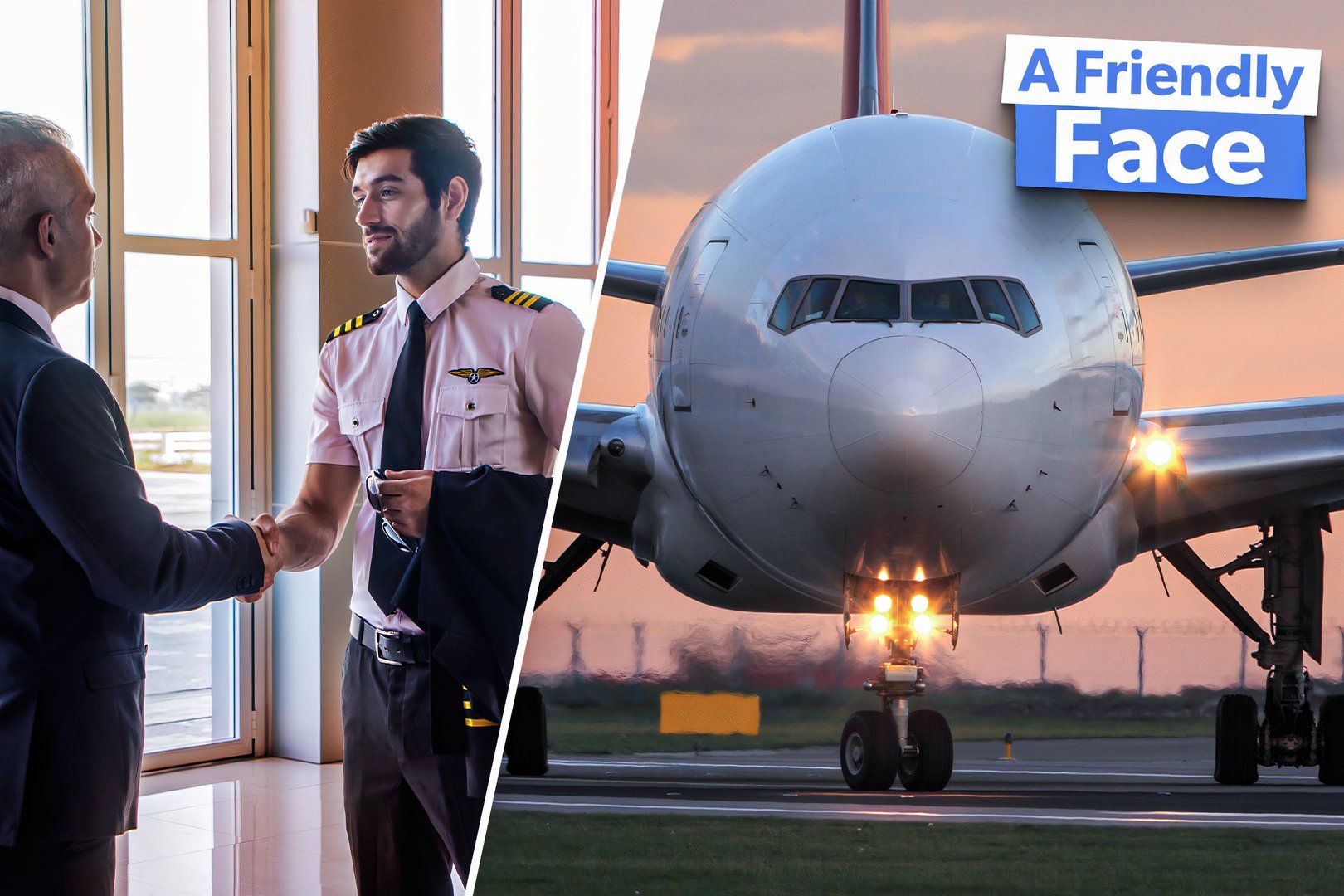Summary Pilots play a customer-facing role, creating a positive image for airlines. Flight deck visits boost customer satisfaction and reviews. Pilots, especially in corporate aviation, handle various customer service tasks.
A pilot's job might not always be considered a customer-facing role, but it is in many ways. Pilots interact with passengers constantly, especially pilots who work for corporate aviation companies who fly smaller planes and have more hands-on time with their customers. This article will examine the importance of service skills for pilots and discuss how meaningful this is to the airlines they work for.

Customer experience Every pilot hears about the importance of their customer-facing image during their basic indoctrination after starting at a new airline. Whether a regional carrier, charter operation, on-demand service, or mainline airline, almost every airline dedicates some time to identifying to pilots the importance of positively influencing passengers while in uniform. Interestingly, airlines have identified that one of the strongest identifiers of their brand is a uniformed pilot .
Airlines, particularly those who use advanced metrics to measure their passengers' experiences, have deciphered this information and communicated it to pilots. From a customer relations standpoint, the point is that airlines want their pilots to represent the company well at work by being cordial, answering questions in the terminal, wearing the uniform properly, and so on. These points are admittedly rather apparent to most pilots.
Flight deck visits Another key point some airlines make regarding customer service is being open and inviting to passengers who want to visit the flight deck. A visit is always time permitting, but most flights during normal operations have plenty of spare time between the pilots completing their preflight duties and pushback. Almost every pilot openly accommodates passenger visits from kids and adults alike.
Allowing passengers to look at the flight deck before or after the flight has been identified as one of the strongest determinates of whether customers review flights favorably. Announcements Another point regarding customer satisfaction is announcements. There's a sweet spot to hit regarding the amount of PAs made (and their length), but this topic is subjective.
At a bare minimum, airlines mandate that pilots make a welcome aboard PA and a top-of-descent/arrival PA that includes flight time and weather information. Airlines also require an announcement for seatbelts, which is an outcropping of legal requirements. Pilots have the liberty to include any pertinent information or sentiments that they would like outside of these mandatory PAs.
Decisions about what is said from the flight deck. Pilots (captains, specifically) have a heightened obligation during irregular or delayed operations. Airlines generally require announcements every 15 minutes to update passengers on the situation as it unfolds.
Even when the problem does not change, pilots are still encouraged to communicate this to passengers during delays. Surveys have shown that many passengers desire more information during delays and are understandably frustrated when information isn't passed along. For this reason, most operations manuals that pilots abide by require these 15-minute updates during delays.
Corporate flying Pilots who work for corporate airlines are arguably responsible for more passenger interfacing compared to their airline counterparts. Not only do these pilots work closer to clients by the smaller aircraft they fly, but the customers generally have higher expectations because of the prices they pay for the service. While lots of corporate companies have flight attendants, there are also plenty that do not staff the cabin with an attendant.
When this is the case, it's up to the pilot(s) to take care of the passengers to the best of their ability. For example, on-demand and Part 135 air carriers (under US law) fly eight-seat Pilatus PC-12s and Beechcraft King Airs. These planes are too small to carry a cabin attendant efficiently, and the flights are usually too short to require their presence.
Also, flight attendants are not legally required to be onboard, as with airlines and other Part 121 carriers. Without flight attendants, the pilots are responsible for closing the doors, conducting the passenger safety briefing (which is always required), and perhaps even loading bags or helping with the fueling. These pilots' proximity and heightened visibility to the passengers make customer service all the more important in these operations.
Another point about pilots and customer relations is regarding the overall perception of the piloting community. Unless passengers are somewhat familiar with the airline industry or are frequent fliers, most are unable to differentiate one airline's pilots from another. The uniform tends to look about the same to the public.
The result is that a passenger's interaction with any pilot in the terminal reflects all pilots. Most pilots view their professional community as intrinsically linked and look out for each other's interests, which means being courteous and experienced while in uniform. As a final note, passengers will occasionally ask a pilot questions about an airport the pilot is unfamiliar with.
For example, a United Airlines pilot might not know the layout of the Atlanta airport nearly as well as Houston, nor would a Delta Air Lines pilot see the layout of Denver as well as they might Salt Lake City. Passengers tend to see pilots as aficionados of whatever airport they are in, but sometimes, we don't know where we are (in the terminal, that is!) any better than the person asking the question. These interactions can be rather funny, but both parties can usually figure out whatever the question is with a bit of brainpower.
Though not an overtly customer-facing job, it certainly behooves pilots and their employers when they are personable and put their best foot forward. Airlines give pilots guidelines to follow but still leave plenty of room for personal communication styles..



















